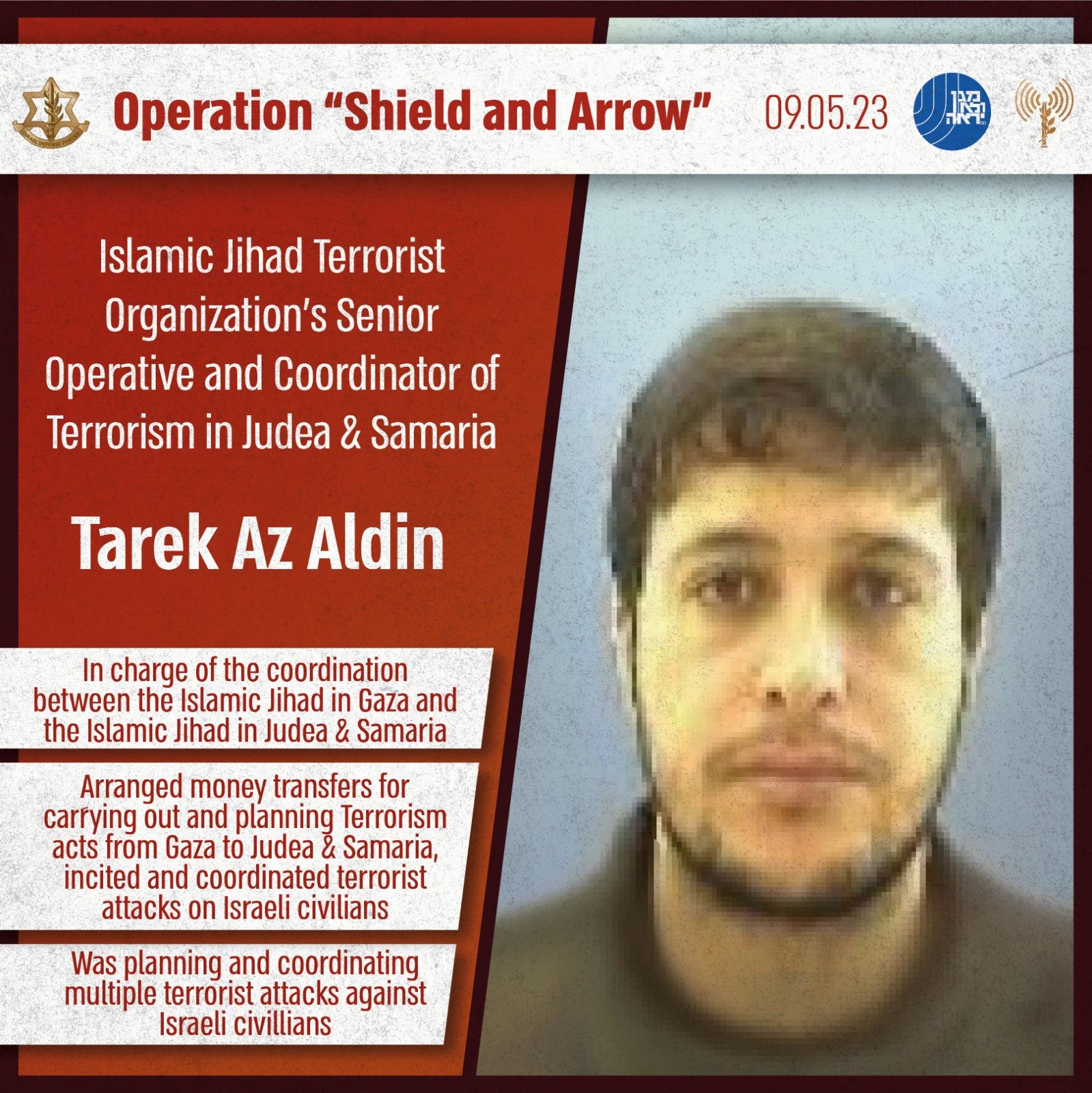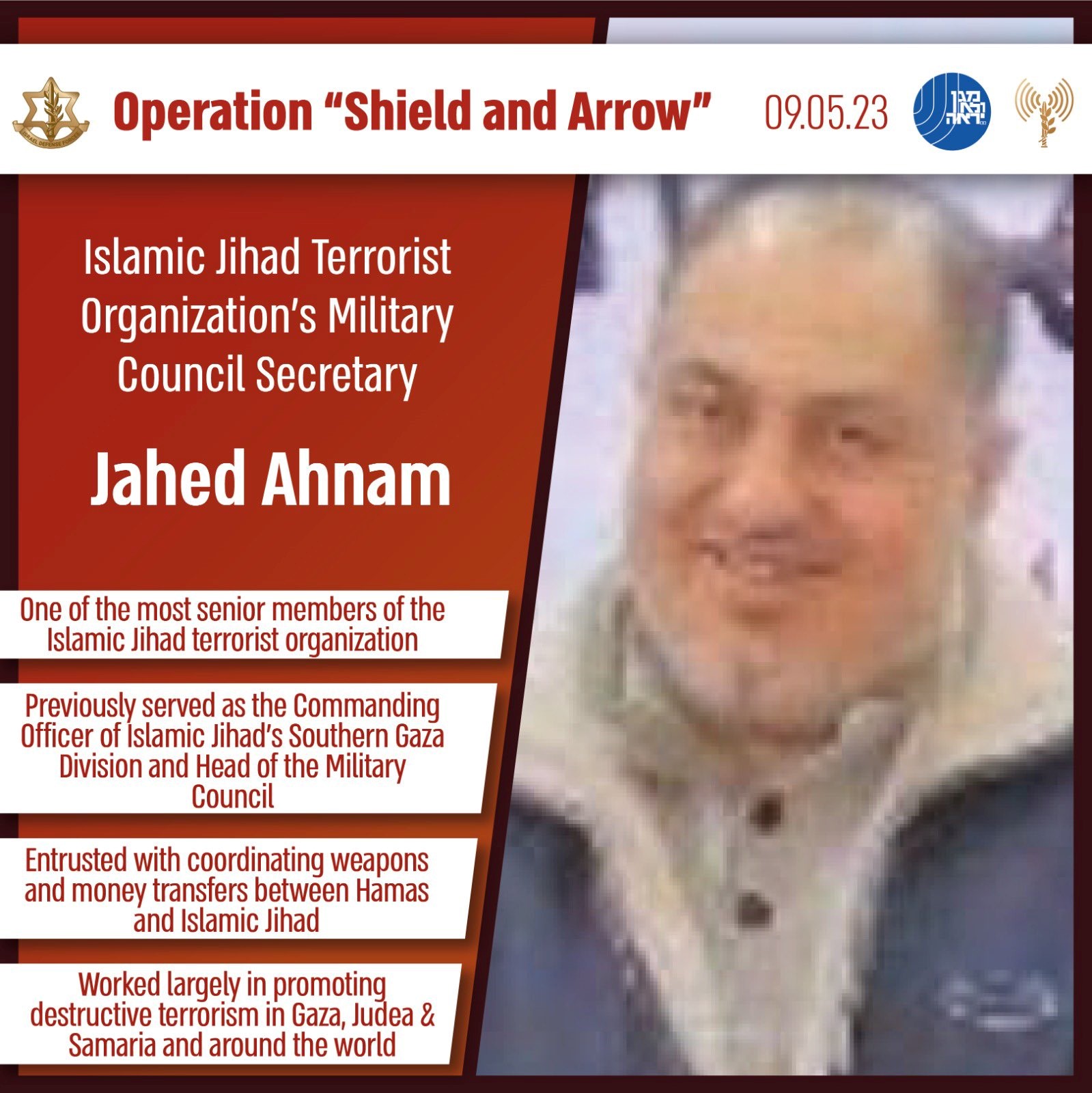Killing 3 Palestinian terrorists and the Laws of War
When Israel killed the three senior terrorists from Palestinian Islamic Jihad (PIL) on the morning of May 9, unfortunately, a number of civilians, including children were also killed. The death of civilians, particularly children, is of course devastating, but in this case, it highlights, to a great extent, the difference between the actions of the terrorists and the actions taken by Israel.
On May 2, terrorists from PIJ, an internationally designated terror organization, fired 104 rockets from Gaza intentionally targeting Israel’s civilian population, including women, children, the elderly and disabled.
While the terrorists in Gaza use their money and international aid to produce and stockpile missiles and to dig dozens of attack tunnels, Israel spent hundreds of millions of dollars, before receiving generous aid from the US government, to develop the Iron Dome Defense System. While each interceptor missile costs circa $50,000, Israel spends its money to save the lives of Israeli civilians. Accordingly, most of the 104 rockets launched by the Palestinian terrorists were intercepted by the system.
In international law, the firing of the missiles constitutes an “armed attack” and a Casus Belli - from Latin: 'occasion for war' - entitling Israel to defend itself.
In the Law of Armed Conflict (LOAC), also known as International Humanitarian Law (IHL) or the Laws of War, there are 4 basic principles that are meant to guide the actions of the parties on the battlefield: Distinction; Military Necessity; Unnecessary Suffering; and Proportionality.
The principle of “Distinction” is the foremost LOAC protection for non-combatants. The principle requires that the object/person being attacked is part of the military apparatus of the enemy and is accordingly a military objective. For our purposes, the term “military objective” includes all the Gazan terrorists - from the lowest of foot-terrorists to the heads of the organizations - and their entire terror infrastructure. Termed “distinction,” this principle requires that all attacks be focused on military targets as opposed to purely civilian targets that provide no contribution to the war effort.
The principle of “Military Necessity” protects the warring combatants. The principle dictates that while LOAC permits attacking combatants, those attacks must be necessary to forward the goals of achieving the military objective. Accordingly, the warring sides are required to avoid wounding or permanently injuring combatants, except as part of the fight.
The principle of "Unnecessary Suffering" also protects the combatants and prohibits the warring sides from using weaponry that cause superfluous injury or unnecessary suffering.
The principle of "Proportionality" is also designed to protect non-combatants. Proportionality in LOAC refers to a situation in which a military target is attacked and that attack causes incidental or collateral damage. Attacks of this nature are legal so long as the loss of life and damage to property incidental to the attacks are not excessive in relation to the concrete and direct military advantage expected to be gained. As the value of the military target grows, so too does the potential extent of permitted incidental damage.
In other words, LOAC accepts the fact that in war, non-combatants may be incidentally killed and civilian property might be incidentally damaged. Neither of these outcomes is necessarily prohibited, so long as the object being attacked is a military target of sufficient value.
While the principle of proportionality has no mathematical equation, it is possible to imagine some more clear-cut examples:
A combatant hides a number of bullets in a huge house. The weaponry and ammunition of the other side are clearly legitimate military targets. The house has a number of floors and serves as an orphanage. In the attack, the house would be destroyed and the orphans killed.
In this scenario, the principle of proportionality would prohibit the described attack since the intended military objective - destroying the ammunition - would clearly be outweighed by the incidental damage.
However when the bullets are replaced with a massive storage area for missiles and missile launchers or with a command center or with a strategic capability (such as technology to disrupt the effectiveness of Israel’s Iron Dome missile defense system) of the enemy, then the equation and result changes.
Following the strikes, the Israeli army released profiles of the PIJ terrorists targeted:



As Palestinian Media Watch exposed, when the PA condemned the Israeli strikes, it referred to the terrorists as “civilians.” The use of this terminology was not coincidental. Rather, it was used to then accuse Israel of intentionally attacking innocent people who are protected from targeting. The PA does never, and would never admit, that any Palestinian is a terrorist. Similarly, when referring to the terrorists as civilians, the PA hopes that most people would not be familiar with the term “direct participation in hostilities”. While it is prohibited to intentionally target non-combatants, that protection is lost when the subject directly participates in the hostilities.
As their profiles clearly show, the terrorists targeted were no mere “civilians”. Rather, they were senior members of an internationally designated terror organization who were directly, and actively participating in armed attacks intentionally targeting Israel’s civilian population. Their seniority and intensive terror activities clearly made them high-value military targets.
Unfortunately, the terrorists in Gaza do not suffice with breaching the LOAC by intentionally targeting Israeli civilians, rather, they compound their malice by using civilians, including their wives and children, as human shields. So while the death of every non-combatant is unfortunate and often heart-wrenching, the people who bear the responsibility for each and every one of those deaths, are the terrorists and not Israel.